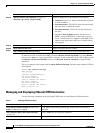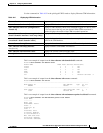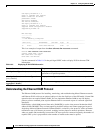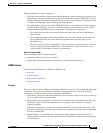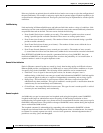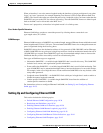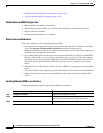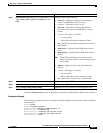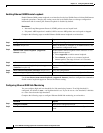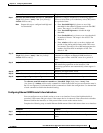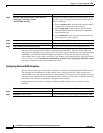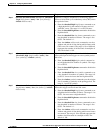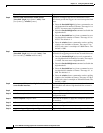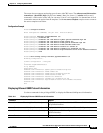
10-38
Cisco ASR 901 Series Aggregation Services Router Software Configuration Guide
OL-23826-09
Chapter 10 Configuring Ethernet OAM
Enabling Ethernet OAM Remote Loopback
Enable Ethernet OAM remote loopback on an interface for the local OAM client to initiate OAM remote
loopback operations. Changing this setting causes the local OAM client to exchange configuration
information with its remote peer. Remote loopback is disabled by default.
Restrictions
• Internet Group Management Protocol (IGMP) packets are not looped back.
• If dynamic ARP inspection is enabled, ARP or reverse ARP packets are not looped or dropped.
Complete the following steps to enable Ethernet OAM remote loopback on an interface:
Use the no ethernet oam remote-loopback {supported | timeout} interface configuration command to
disable remote loopback support or remove the timeout setting.
Configuring Ethernet OAM Link Monitoring
You can configure high and low thresholds for link-monitoring features. If no high threshold is
configured, the default is none —no high threshold is set. If you do not set a low threshold, it defaults
to a value lower than the high threshold.
Complete the following steps to configure Ethernet OAM link monitoring on an interface:
Command Purpose
Step 1
configure terminal Enter global configuration mode.
Step 2
interface interface-id Define an interface to configure as an EOM interface, and
enter interface configuration mode.
Step 3
ethernet oam remote-loopback {supported |
timeout seconds}
Enable Ethernet remote loopback on the interface or set a
loopback timeout period.
• Enter supported to enable remote loopback.
• Enter timeout seconds to set a remote loopback
timeout period. The range is from 1 to 10 seconds.
Step 4
end Return to privileged EXEC mode.
Step 5
ethernet oam remote-loopback {start | stop}
{interface interface-id}
Turn on or turn off Ethernet OAM remote loopback on an
interface.
Step 6
show ethernet oam status [interface interface-id] Verify the configuration.
Step 7
copy running-config startup-config (Optional) Save your entries in the configuration file.
Command Purpose
Step 1
configure terminal Enter global configuration mode.
Step 2
interface interface-id Define an interface, and enter interface configuration
mode.



